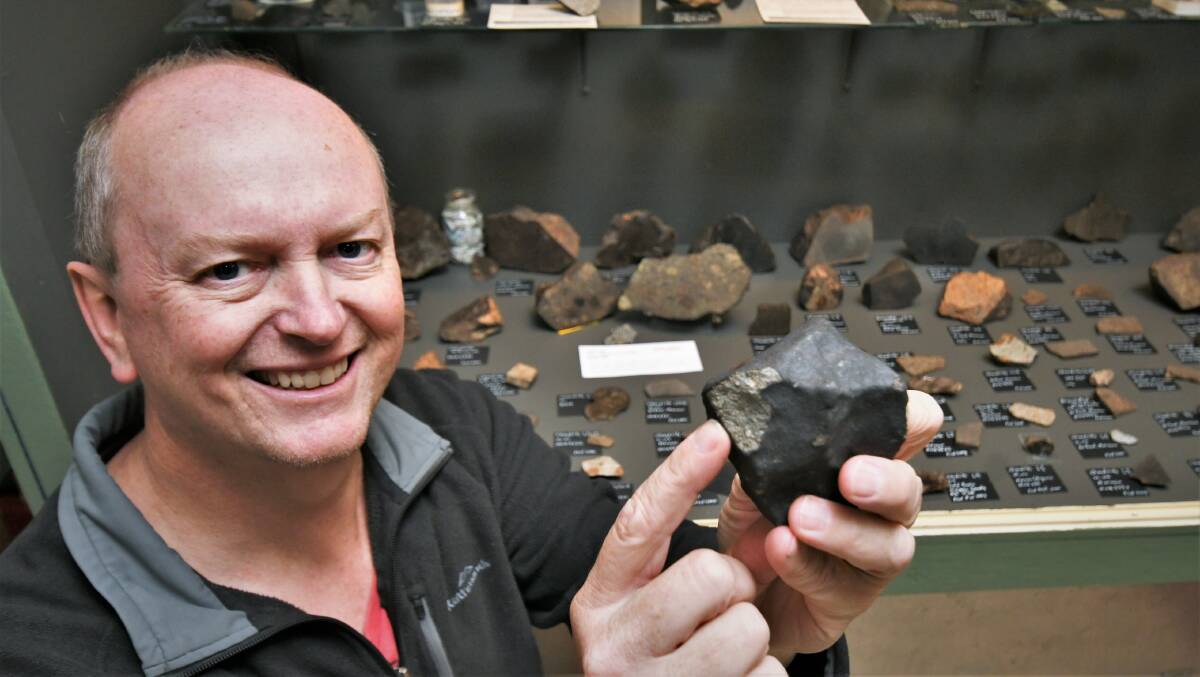
The latest examination of an Australian meteorite, part of which is on display at the Bathurst Observatory, further supports the idea that meteorites could be the roots to life on Earth.
Subscribe now for unlimited access.
$0/
(min cost $0)
or signup to continue reading
The Murchison meteorite is one of three around the world to be re-examined by scientists and Bathurst Observatory owner Ray Pickard said the new findings are a thrilling advancement in the field.
"It is very exciting and one of the reasons why I study meteorites is to learn more about how things came to be and I'm so excitedly waiting for the next fall," Mr Pickard said.
There has been ongoing research as technology has improved to identify the organic compounds the meteorites are made up of since they fell in Murray Kentucky in 1950, Murchison Victoria in 1969 and near Tagish Lake in Canada's British Columbia province in 2000.
Previous examinations of the meteorites detected three of the five chemical components needed to form DNA and RNA.
On Tuesday, April 26, researchers said they had now identified all five.
Mr Pickard said the knowledge that organic molecules exist adds to the possibility that there could be life elsewhere in the universe and the galaxy.
ALSO MAKING NEWS: Eglinton walkway will honour farmer and Landcare pioneer
"One of the reasons I research these things is so that we can learn more about the formation of our solar system and even the possibility of life extending beyond Earth," Mr Pickard said.
"It's amazing to think that there are meteorites we have here in Bathurst that are older than Earth in the observatory display.
"You can actually hold something that existed at the time our solar system was born, to me that's one of those amazing things to think that you can do that."
Though there are more than just the five identified components needed to create a living organism, Mr Pickard said the basic carbon compounds found are the building blocks that all life is made from.
ALSO MAKING NEWS: Numbers down but show organisers pleased with turnout
The compounds do not represent life itself but together they make what is needed to form DNA and RNA.
In Earth's infancy it was hit by meteorites and Mr Pickard said the carbon compounds that accumulated on the surface "through processes that we still don't understand somehow managed to form self-replicating organic compounds which later became life."
Our journalists work hard to provide local, up-to-date news to the community. This is how you can access our trusted content:
- Bookmark www.westernadvocate.com.au
- Make sure you are signed up for our breaking and regular headlines newsletters
- Follow us on Twitter
- Follow us on Instagram
- Follow us on Google News


